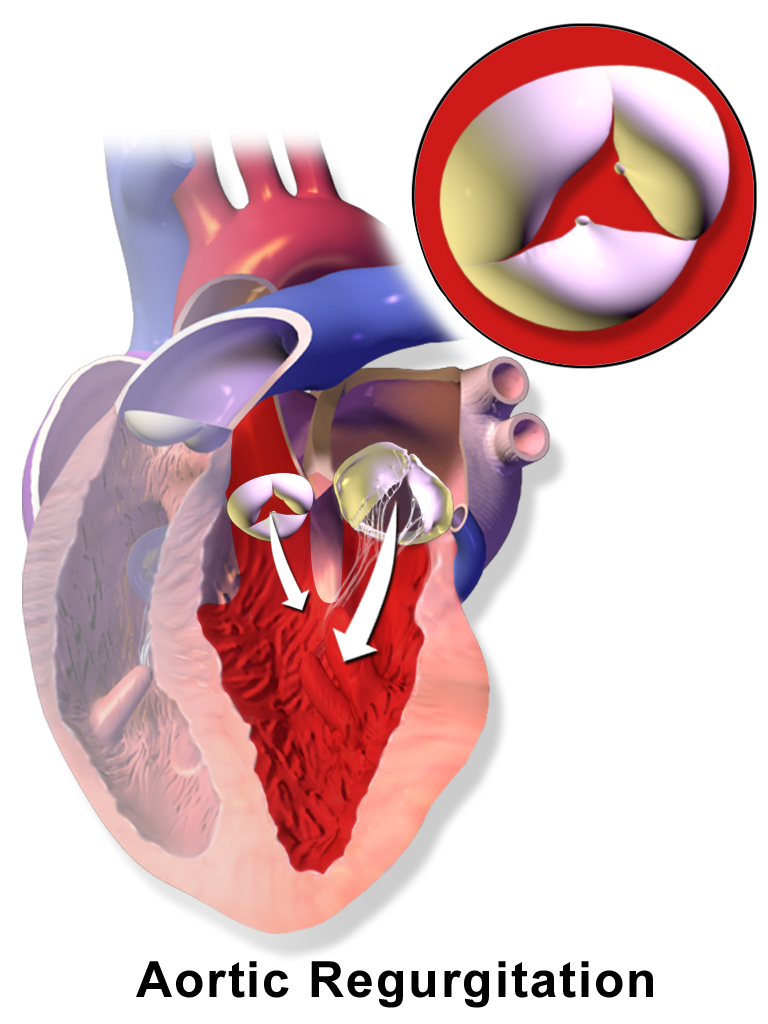Aortic Valve Regurgitation Causes, Symptoms, Diagnosis and Treatment

What Is Aortic Valve Regurgitation?
Aortic regurgitation (AR), also known as aortic insufficiency (AR), is the leaking of the aortic valve of the heart that causes blood to flow in the reverse direction during ventricular diastole, from the aorta into the left ventricle.
Aortic valve regurgitation allows some of the blood that was just pumped out of the heart’s main pumping chamber (left ventricle) to leak back into it.
The leakage may prevent the heart from efficiently pumping blood to the rest of the body.
Aortic valve regurgitation can develop suddenly or over decades. Once aortic valve regurgitation becomes severe, surgery is often required to repair or replace the aortic valve.
Causes Of Aortic Valve Regurgitation:
Any condition that damages a valve can cause regurgitation.
Causes of aortic valve regurgitation include:
- Congenital heart valve disease.
Being with an aortic valve that has only two leaflets (bicuspid valve) or fused leaflets rather than the normal three separate leaflets puts one at risk of developing aortic valve regurgitation at some time in their life. - Endocarditis.
- Rheumatic fever.
Rheumatic fever — a complication of strep throat and once a common childhood illness in the United States — can damage the aortic valve. - Disease.
Marfan syndrome, a connective tissue disease. - Trauma.
Damage to the aorta near the site of the aortic valve, such as damage from injury to your chest or from a tear in the aorta, also can cause backward flow of blood through the valve.
The Following Factors Increase The Risk Of Developing Aortic Valve Regurgitation.
- Aortic valve damage.
- High blood pressure (hypertension).
- Congenital heart valve disease.
- Age.
Symptoms Of Aortic Valve Regurgitation:
Signs and symptoms may include:
- Fatigue and weakness, especially when one increases activity level
- Shortness of breath with exertion or when lies down
- Swollen ankles and feet (edema)
- Chest pain (angina), discomfort or tightness, often increasing during exercise
- Lightheadedness or fainting
- Irregular pulse (arrhythmia)
- Heart murmur
- Sensations of a rapid, fluttering heartbeat (palpitations)
Diagnosis OF Aortic Valve Regurgitation:
Diagnostic tests include:
- Echocardiogram.
- Exercise tests. Different types of exercise tests help measure your tolerance for activity and check your heart’s response to exertion.
- Cardiac magnetic resonance imaging. Using a magnetic field and radio waves, this test produces detailed pictures of your heart, including the aortic root.
- Electrocardiogram (ECG).
- Chest X-ray, to determine whether your heart is enlarged.
- Cardiac catheterization.
Treatment Of Aortic Valve Regurgitation:
The following surgical options are available:
- Valve repair
- Valve replacement
By : Natural Health News




